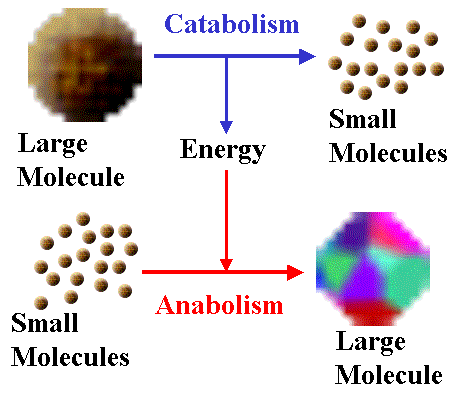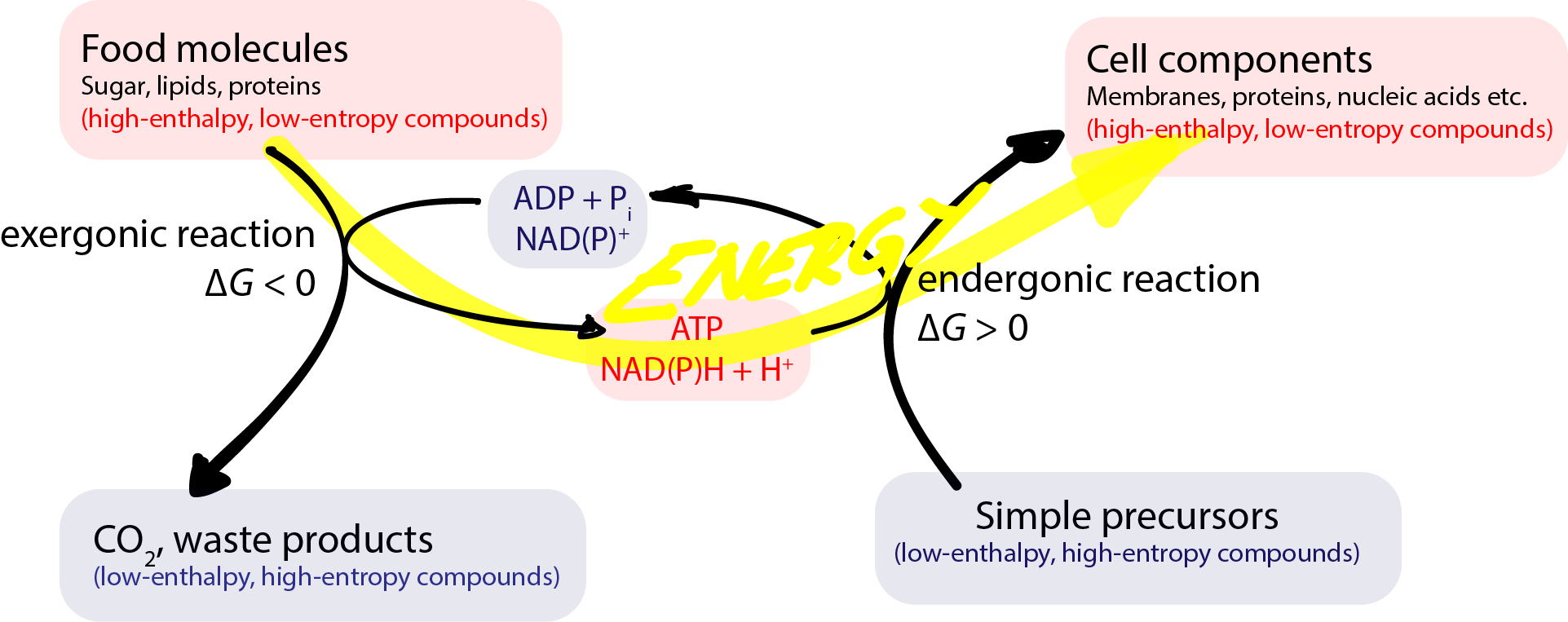Anabolism
With or anabolism anabolism (from Greek αναβολισμός, anabolismós, " Aufwurf " ) is called in animals building materials. The opposite of anabolism is catabolism, namely the degradation of substances. Catabolism and anabolism, are parts of metabolism.
Definitions
The precise definitions in the literature are similar, but are different.
Widely used is the definition of all the anabolic metabolic reactions. After that, strictly speaking, some exergonic conversion processes included for the purpose of energy production, as far as in them complicated from simpler substances arise, such as the reduction of carbon dioxide CO2 with hydrogen H2 to acetic acid CH3COOH (a form of Homoacetatgärung ) and the oxidation of hydrogen H2 with oxygen O2 to water H2O ( oxyhydrogen reaction) in some bacteria. In general, technical parlance, however, be such conversion processes that serve the energy, not referred to as anabolism.
Part of this definition is restricted to the construction of endogenous substances, which means that any substance reactions in which the products are excreted excluded, such as the formation of antibiotics and the mentioned hydrogen-oxygen reaction. In a further variation, only the combination of simple molecules, complex molecules, is referred to as anabolism and thus excluding the participation of atoms and monatomic ions. Since atoms and monatomic ions can not be products of a structure and atoms as starting materials of construction reactions are not known, only monatomic ions are excluded as starting materials with this definition, this exclusion is not justified.
Other definitions describe the totality of the endergonic ( energy-consuming ) conversion processes as anabolism. Thus, this is also the formation of substances that are excreted included. Variations of this definition be restricted to the endergonic structure of these materials, or to the endergonic structure of molecules. It is likely that this endergonic conversion processes which are only partial reaction a reaction sequence which is exergonic in the sum and the energy used ( catabolism), should be excluded, such as the formation of sugar phosphates to initiate glycolysis.
Energy demand
Most energy is needed for the construction of fabrics. In chemotrophic organisms it is obtained from chemical, energy- releasing ( exergonic ) material reactions in phototrophic organisms from light. The energy from these sources is first converted into a short-term energy storage and transfer agents, namely adenosine triphosphate ( ATP). ATP is used in the construction of energy-consuming reactions as a direct energy source. And a reducing agent is required if for the development of endogenous substances serves to NADPH, which is formed in phototrophs by the light reaction in chemotrophic by the oxidation of substances.
Structure of molecules
The simplest molecules, which result from the anabolic process of photosynthesis, are simple sugars. By further anabolic processes these sugar molecules to be rebuilt. This results in, among other amino acids, isoprenoids and nucleotides. From these precursors then complex molecules such as proteins, fats, carbohydrates, genetic material or lignin can be formed.










